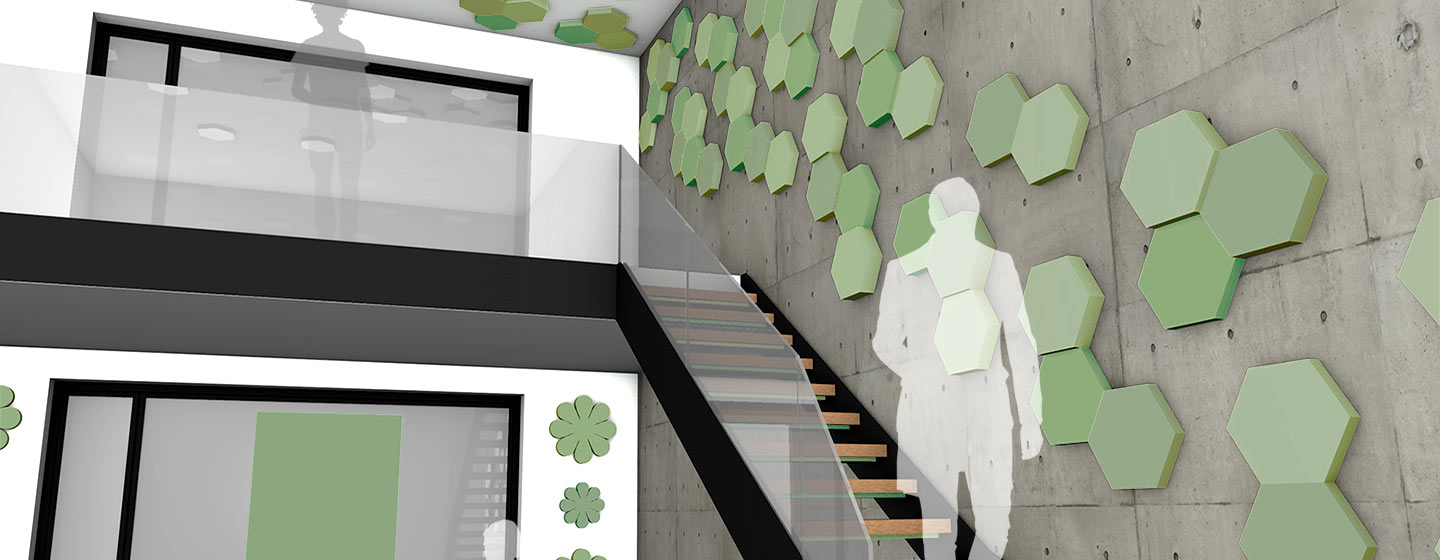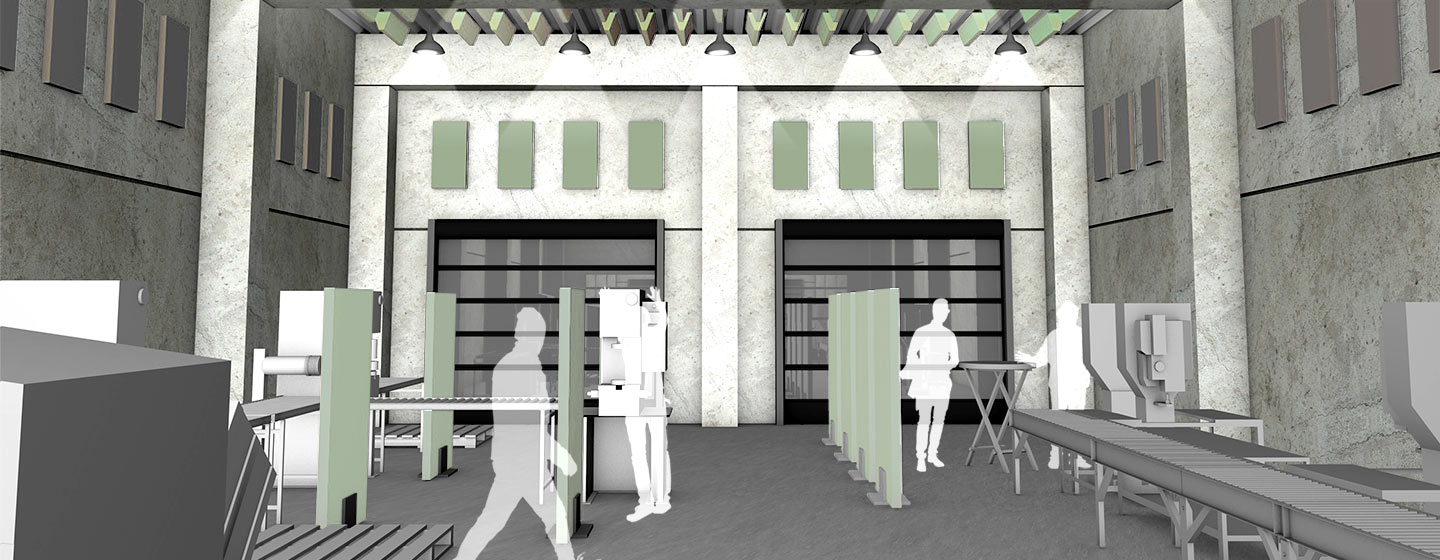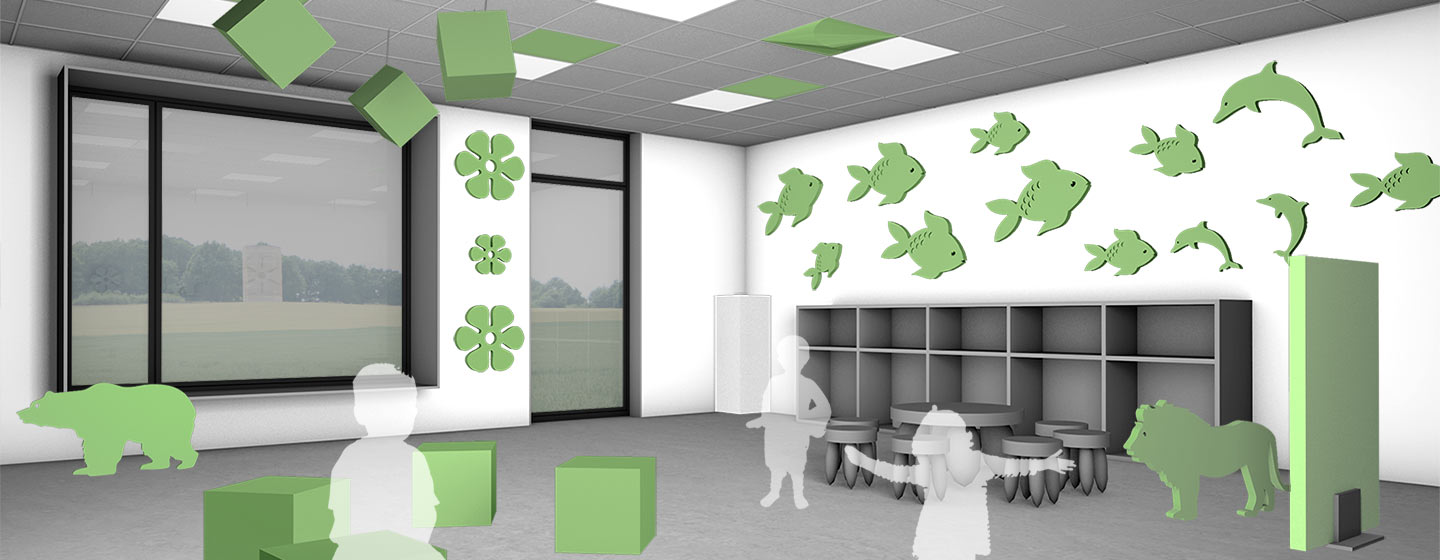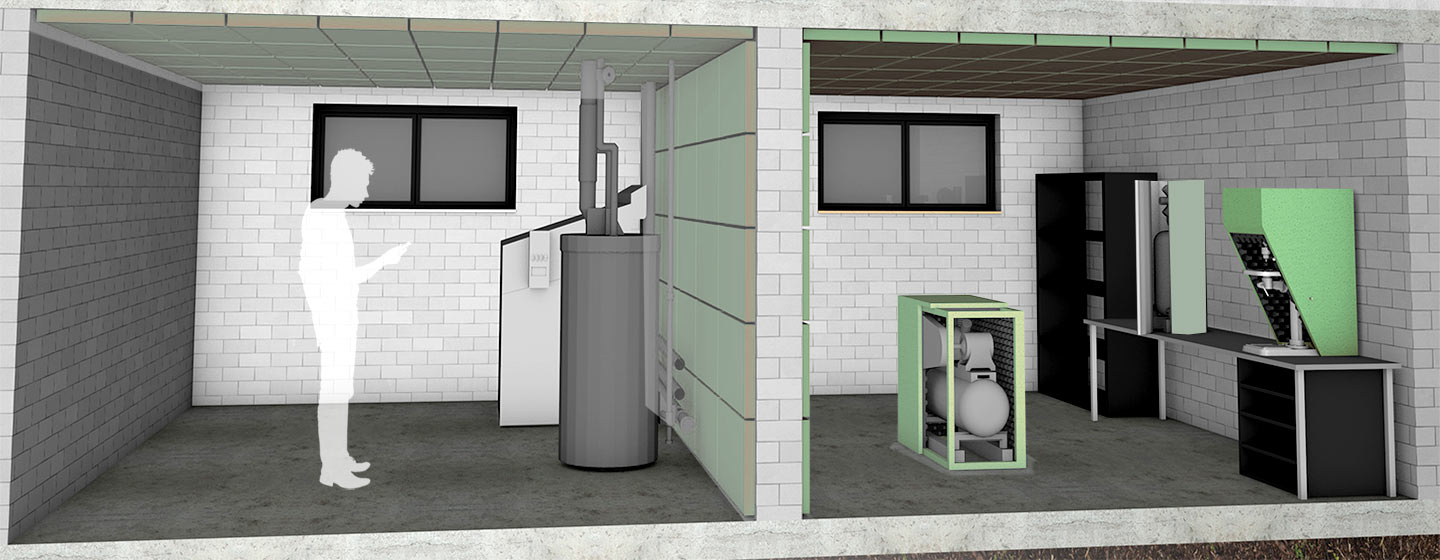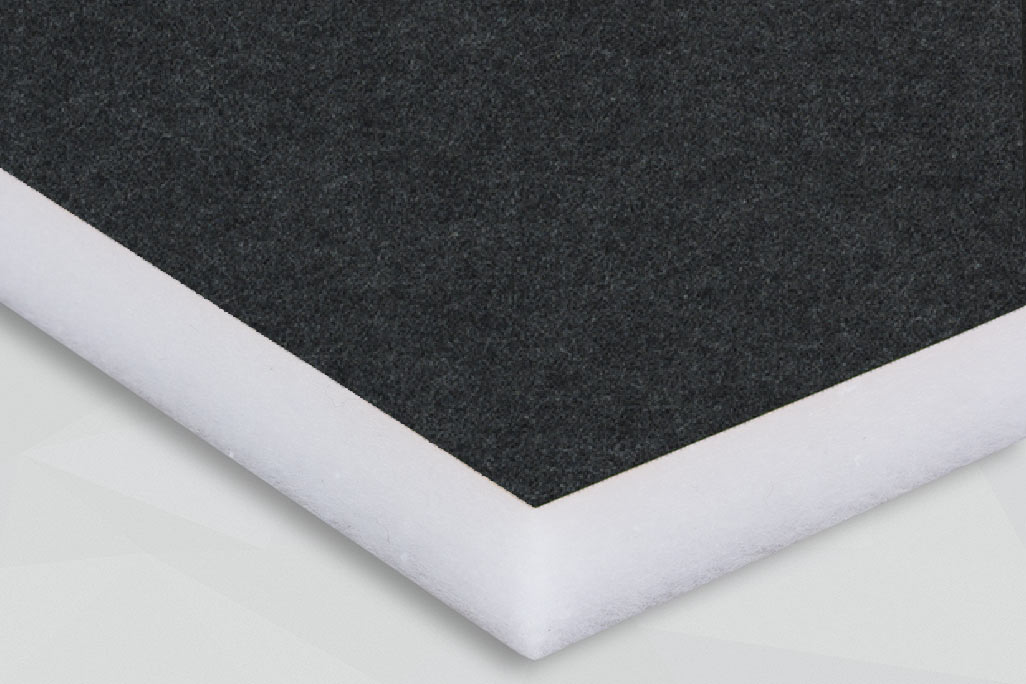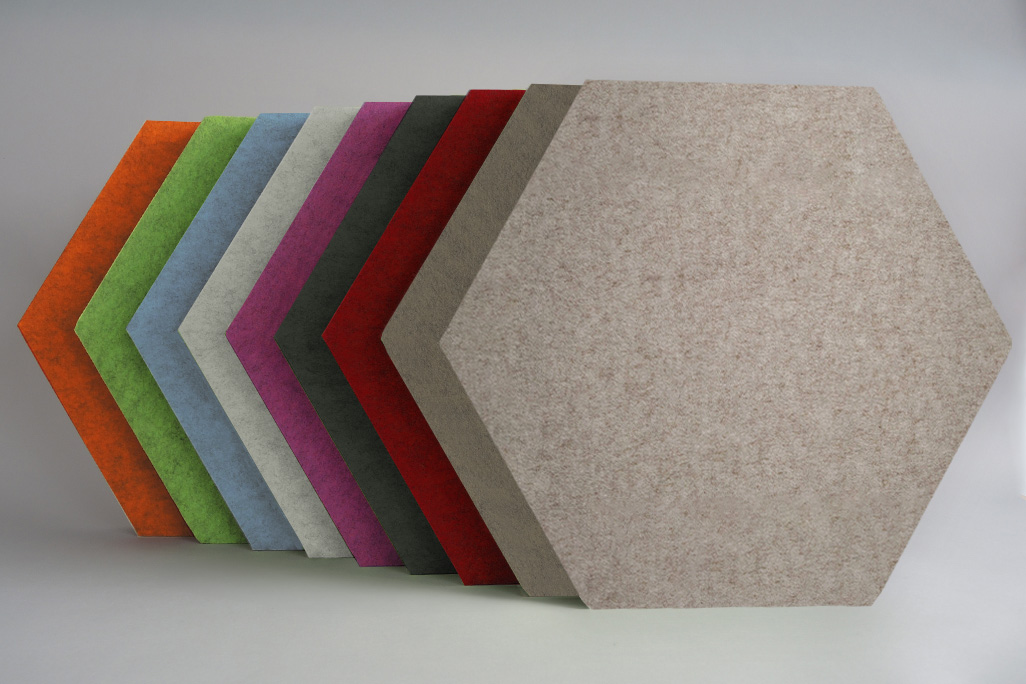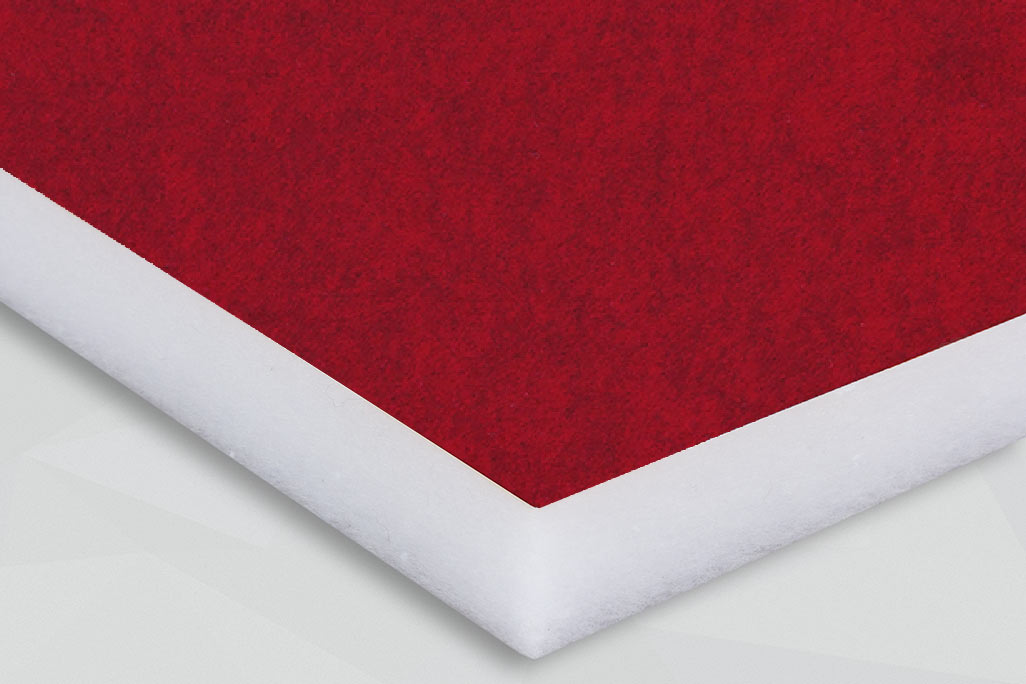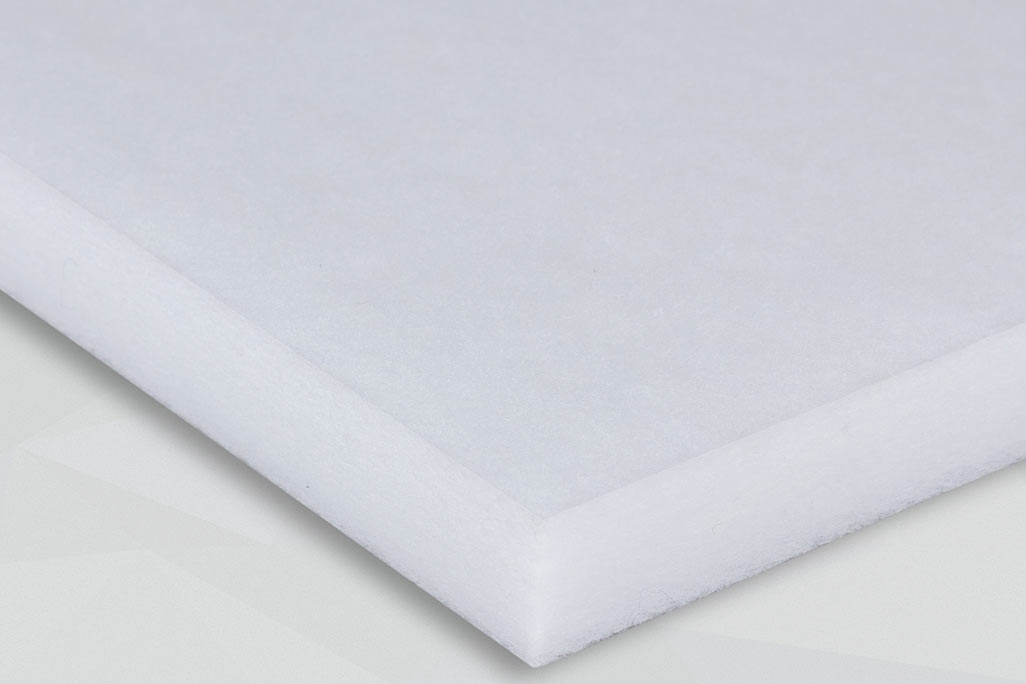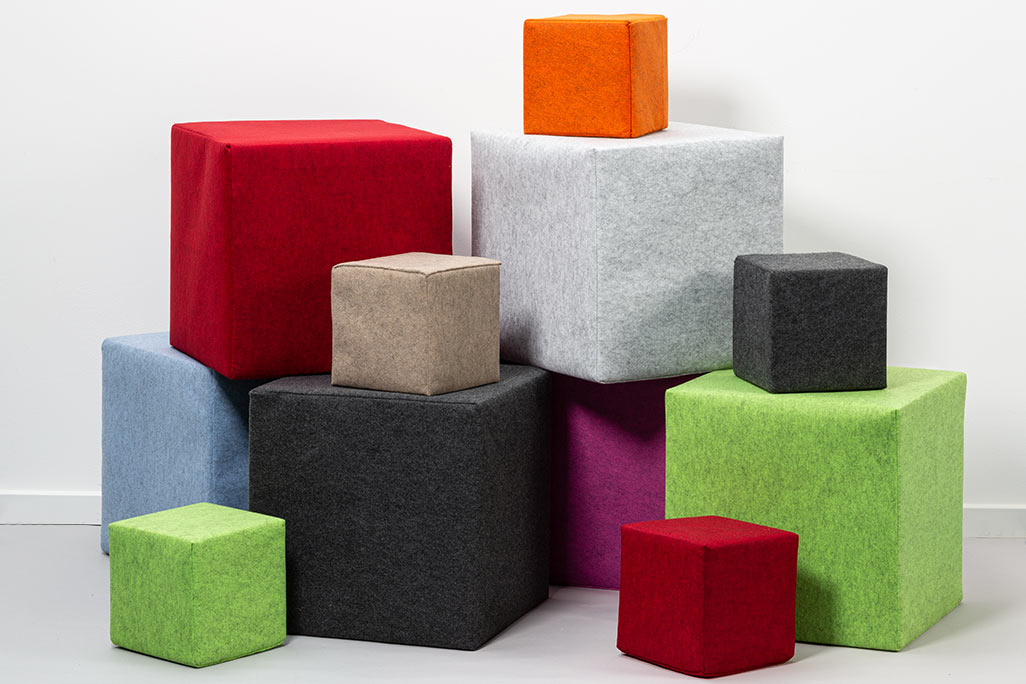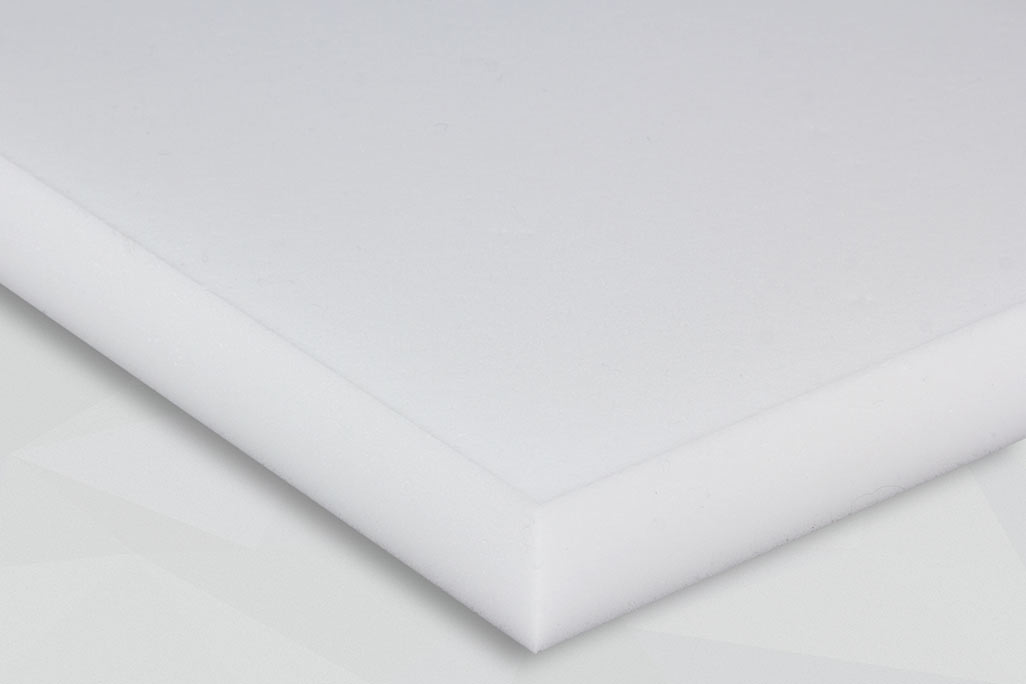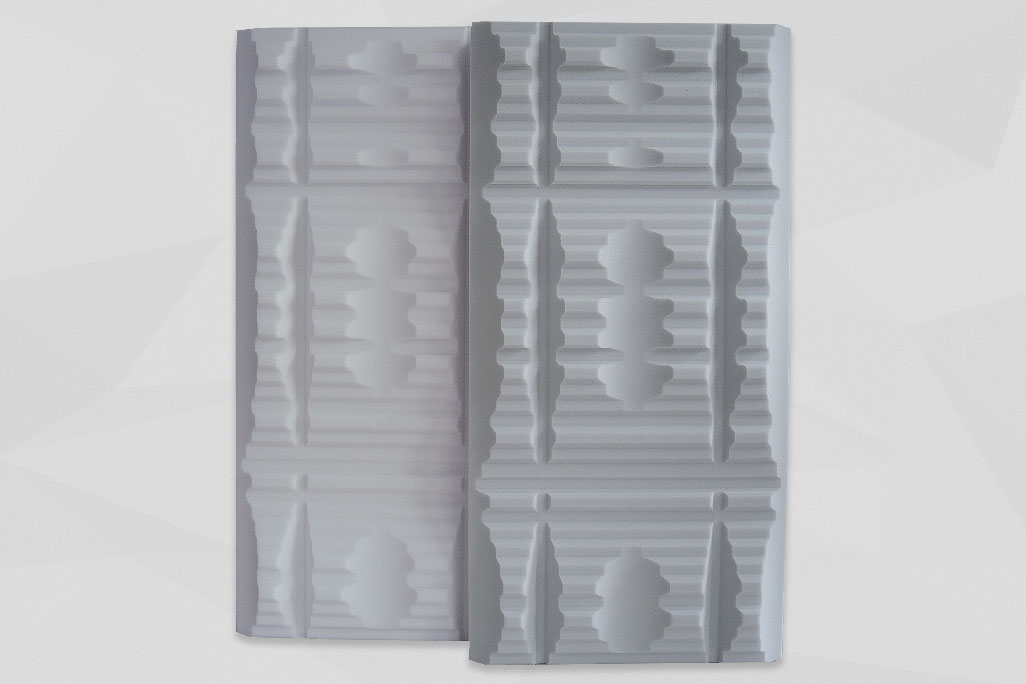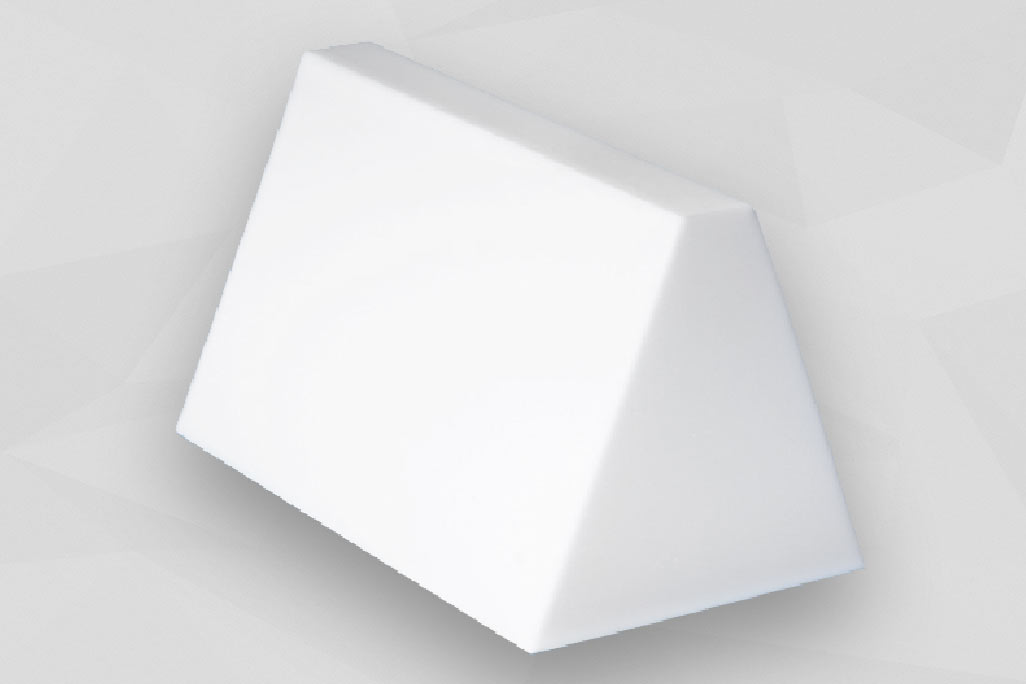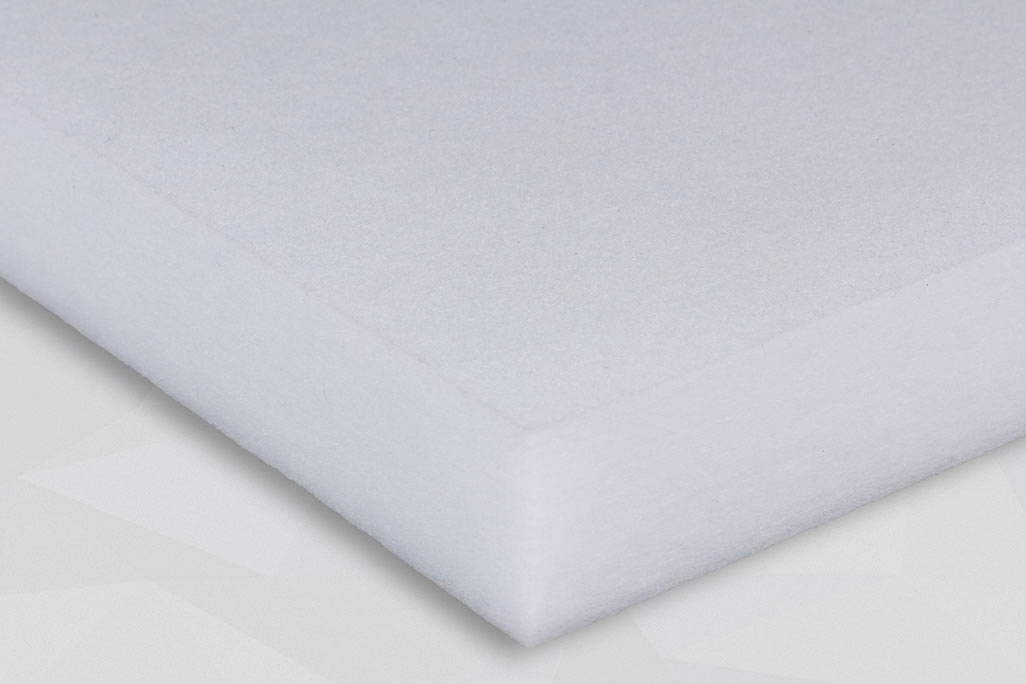
How to reduce reverberation in a room: tips for improved acoustic conditions
In case of high reverberation, what can be done to reduce the noise level in the room?
The acoustics in living and working spaces play a decisive role in fostering concentration and general wellbeing. Unpleasantly high reverberation levels in a given room can make it more difficult to concentrate, interfere with conversations and cause stress. It is therefore important to reduce the sound level in the room. For this purpose, soniflex would like to give you a few tips on how to reduce reverberation and ensure pleasant acoustic conditions. Whether for offices, private living spaces or special environments such as rehearsal studios - we offer you comprehensive solutions and practical tips.Our most popular products for this use case
Basics: What causes sounds to reverberate throughout the room?
If you wish to reduce the reverberation, you first need to understand the specific causes of sound reverberation in the room. Reverberation is often also referred to as lingering sound. Sounds can linger for a long time when sound waves are reflected by hard and smooth surfaces such as walls, floors and ceilings as well as windows and doors. But what can you do about lingering sound?
In contrast to echo, which is a clearly identifiable repetition of a specific sound event, reverberation is a repeated and lasting sound reflection that blurrs the overall sound pattern. Rooms with high ceilings, smooth surfaces and/or minimalist furnishings tend to reflect sound events more strongly and persistently. The room layout and the materials used also play an important role in generating reverberation.Large, uninterrupted surfaces such as window fronts or bare concrete walls tend to reflect sound particularly strongly, causing extended reverberation times and, as a consequence, increased levels of diffuse noise. The reverberation time is a decisive factor in the acoustic conditions of a room. The good news: It can be effectively shortened through the targeted use of sound-absorbing materials. Such measures lead to enhanced speech intelligibility, improved sound quality and a comfortable acoustic environment. Short reverberation times are particularly important in rooms that are used for communication, studying, music or concentrated work.
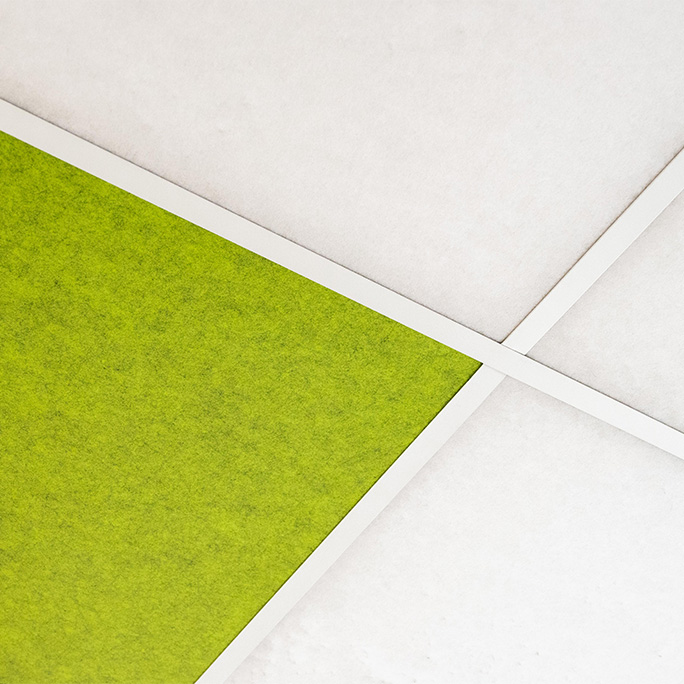
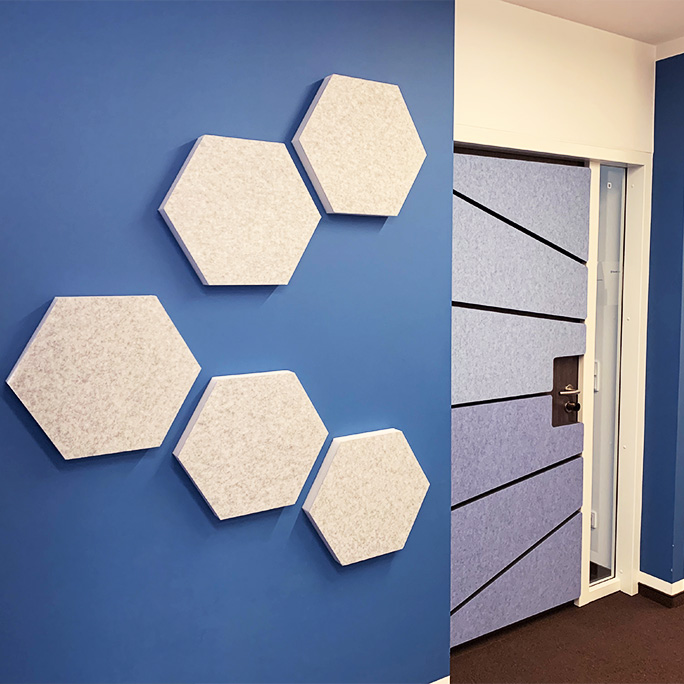
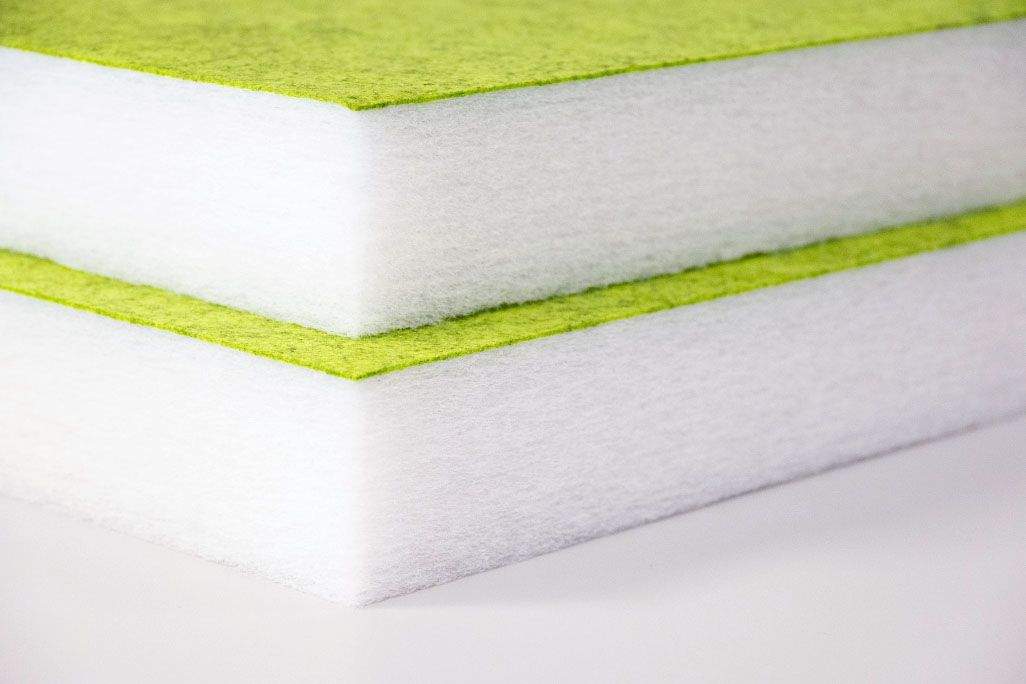

Installation
On request, nearly all our products can be delivered with self-adhesive rear faces, enabling easy, clean and time-saving installation – perfect for retrofit applications in rooms that are already in use.
Noise control
Thanks to their open-cell structure, our noise protection materials absorb sound waves and effectively attenuate bothering noise. A satisfactory result can already be achieved by lining 30 to 50 % of the ceiling and wall surfaces.
Fire protection
Many of our noise-control products are classified as flame-retardant according to DIN 4102 or DIN EN 13501. Please contact your local authorities in advance for information about the required fire protection class.
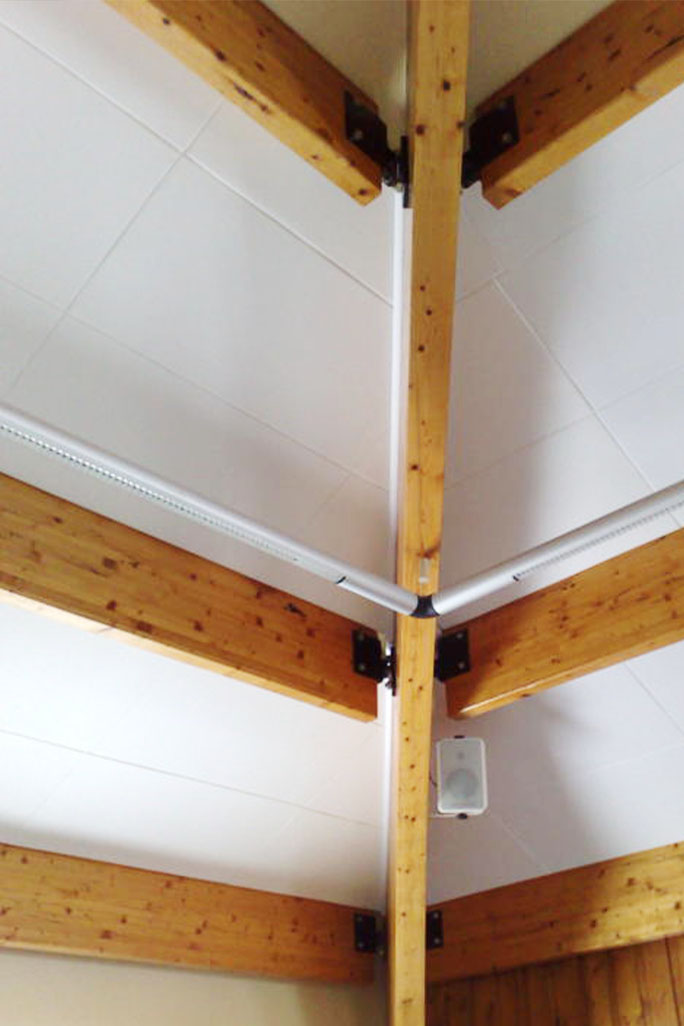
The effects of high reverberation levels:
A high reverberation level can significantly impair the intelligibility of speech. This is particularly problematic in offices and conference rooms, but also in classrooms, kindergartens and lecture halls, since clear comprehensibility is essential for effective communication, working and learning. Lingering sounds disturb speech transmission so that important information may be lost. It is therefore important to minimize reverberation in the room.
Constant exposure to noise from reverberation also leads to stress and fatigue, which negatively affects productivity and the ability to concentrate. This is why an optimized acoustic environment is crucial for well-being. Favorable acoustic conditions will be beneficial for both mental health and the general quality of life.Especially in recording studios and music theaters, good acoustics are essential for high-quality recordings. But also in home theaters, lingering sounds may mess with sound quality and ruin the movie experience if the reverberation in the room cannot be minimized. Excessive reverberation makes it difficult to hear sounds clearly and precisely, which is especially annoying when playing or recording music or watching movies.
What factors do negatively impact room acoustics?
Architecture and room design High ceilings and spacious, open rooms tend to reinforce reverberation. A minimalistic interior design with few furnishings and smooth, undecorated walls reinforces this effect. The open floor plans and large fronts that are preferred in modern architecture usually intensify sound reflection and often create unfavorable acoustic conditions.The materials used Concrete, glass, wood and natural stone are “sonically hard” materials, i.e. they reflect sound waves to a large extent. These materials are an integral part of modern aesthetics, yet they require additional acoustic measures to ensure that noise levels remain comfortably low.
Easy ways to reduce reverberation in the room
Clever interior design and furnishing can reduce the reverberation. Upholstered furniture, carpets, curtains and shelves break and/or absorb the sound waves and help ensure pleasant acoustics.
Soft surfaces and textiles in particular contribute to sound absorption. Large sofas or bookshelves serve as partitions and, when placed in the right positions, will interrupt the path of the sound waves and shorten the reverberation time. Also compact objects such as our soni CUBE seating cube can prove extremely helpful in improving room acoustics. Wall elements such as our soni CIRCLE and soni HEXAGON can also be used to ensure pleasant room acoustics - with minimum installation effort.The installations of special sound absorbers such as acoustic posters, ceiling elements and acoustic panels contribute to significantly improving room acoustics. These products consist of open-cell or porous materials, for instance foams and nonwovens, that effectively absorb sound waves.
Our soni PICTURE acoustic posters not only help reduce noise, but are also decorative objects that will serve as beautiful eye-catchers on any wall.
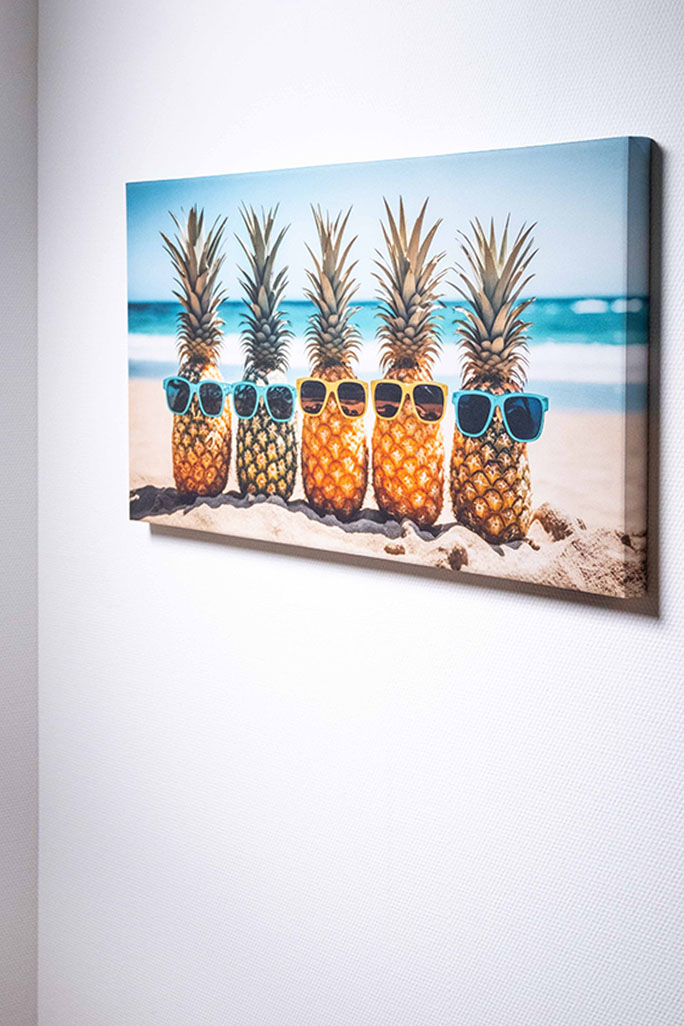
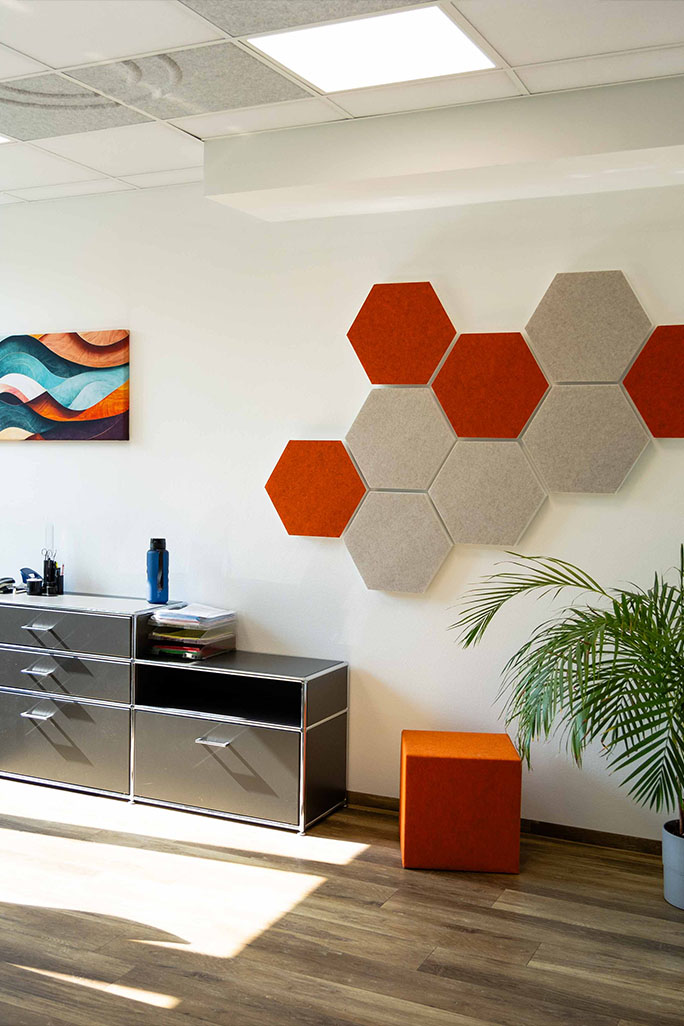
Innovative products from soniflex can help improve the acoustics in your room
soniflex offers you a wide range of sound-absorbing products that can be used to reduce noise. The soniflex range includes foams, nonwovens and specially developed sound absorber products.
Our noise-control products score especially with high effectiveness and easy application. Customers can choose from a wide range of sizes, colors and designs to create the optimal solution for their individual needs.soniflex products are installed in offices, call centers, kindergartens, schools, recording studios, production halls and private homes, where they help improve the acoustic conditions for the long term. In open-plan offices, sound absorbers create a more pleasant working atmosphere, while in private living spaces they increase living comfort. Also in production environments such as workshop they effectively contribute to noise reduction.
Countless satisfied customers report that they have improved their working conditions and/or created a more pleasant living environment with the help of soniflex products. Positive feedback reaches us not only from Germany, but also from various other countries around the world. Customers particularly appreciate the quick and uncomplicated installation and the noticeable improvement in acoustic conditions.
Get in touch and let our team of experts provide you with advice - free of charge and without obligation to buy.

